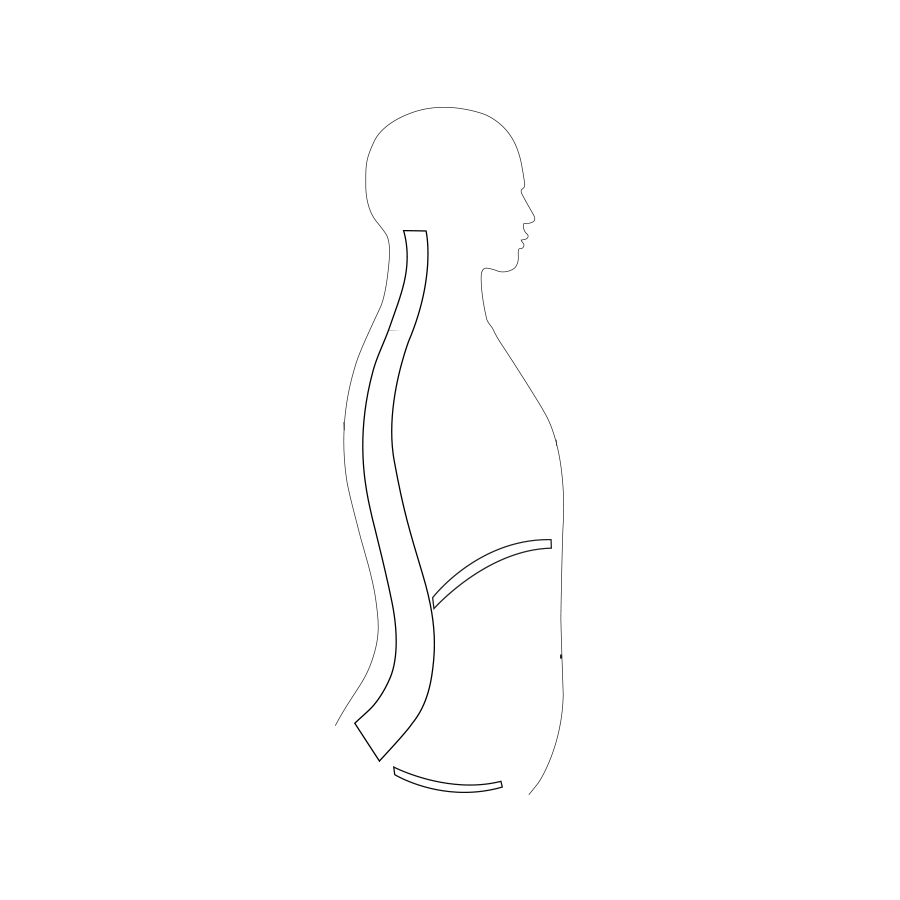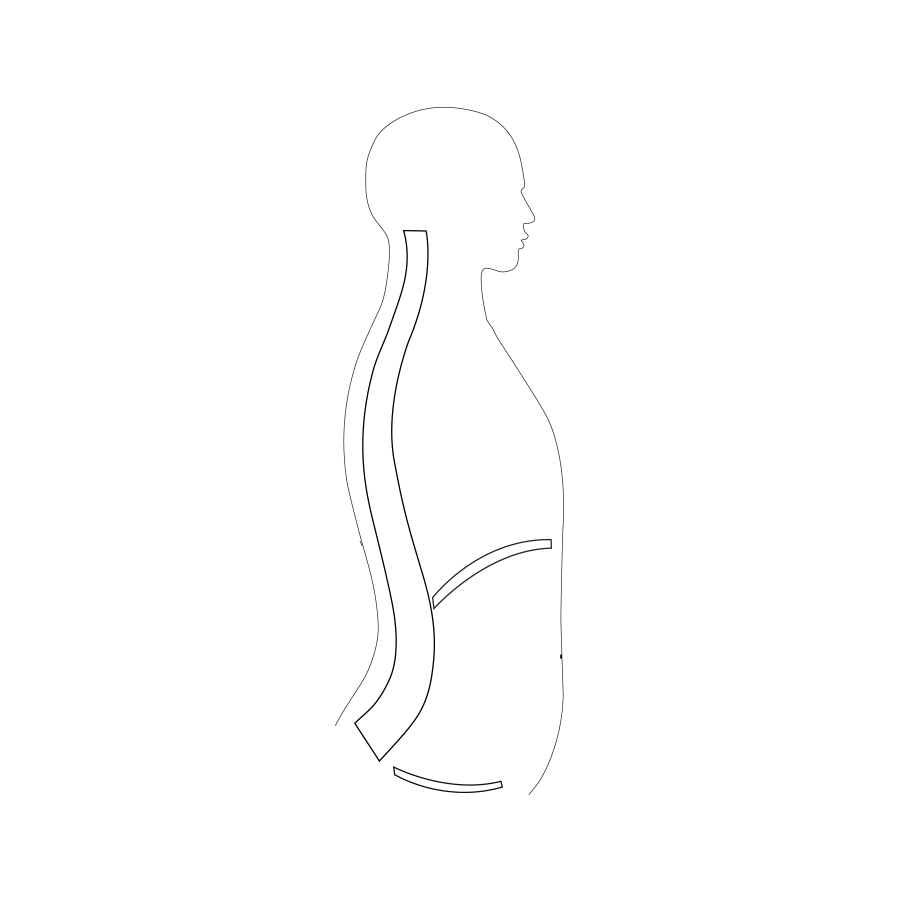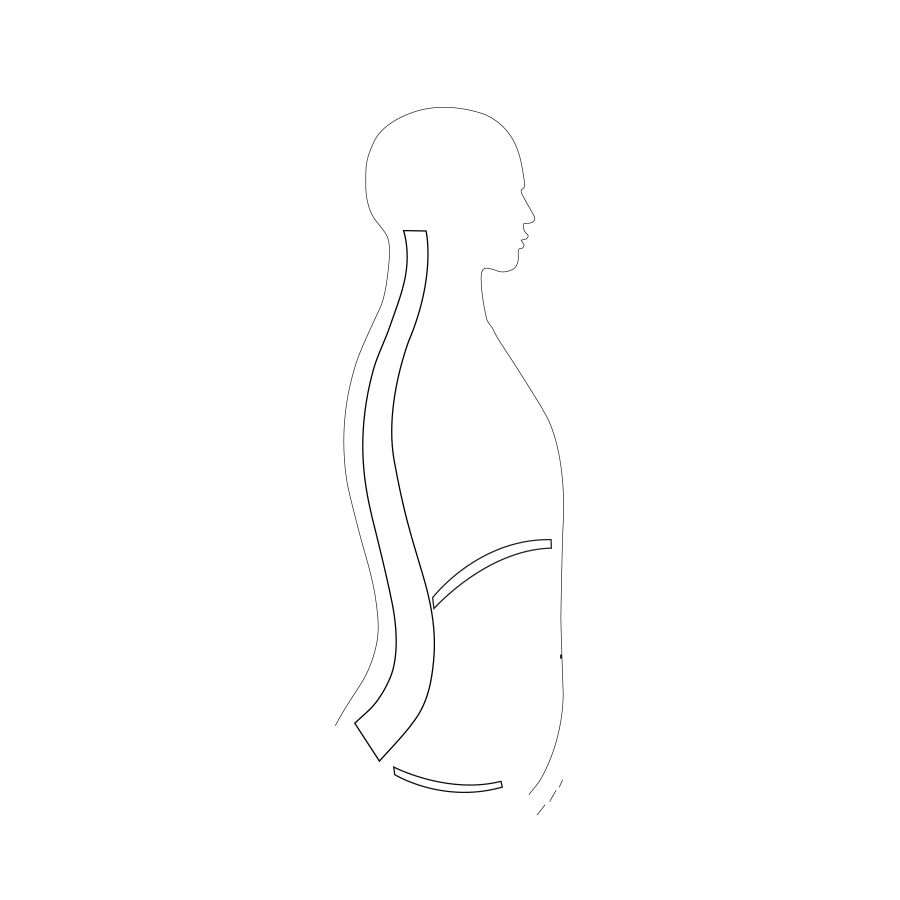RESPIRATORY TRACK
CLAVICULAR
Clavicular breathing primarily involves the uppermost part of the chest, near the clavicles (collarbone). During inhalation, the shoulders rise, and there’s visible movement in the upper chest, the arms and shoulder blades rise, then the abdomen is pulled in; which known as paradoxical breathing. The use of the diaphragm is minimal.
Clavicular breathing primarily relies on the use of the accessory muscles of the neck and shoulders. This shallow breathing pattern can lead to muscle tension. It expresses and contributes to feelings of STRESS or ANXIETY.

UPPER CHEST
Upper chest breathing, refers to a shallow breathing pattern where the primary movement occurs in the upper chest and shoulders. The inhalation is characterized by the elevation of the shoulders and visible movement of the chest, while the abdomen remains relatively still. The use of the diaphragm is minimal. This type of breathing primarily involves the use of the accessory muscles of the neck and shoulders. Upper chest breathing is often associated with stress, anxiety, or a state of heightened arousal.

BELLY BREATHING
During inhalation, the abdomen protrudes outward, and
during exhalation, it falls back. The chest does not move.
The work of the abdominal cavity during the breathing
process serves as a specific massage for the internal organs
and has a beneficial effect on digestive processes.
Practiced intentionally it promotes relaxation.

DIAPHRAGMATIC-LOWER-RIB BREATHING
It involves the active engagement of the diaphragm muscle.
The inhalation is initiated by the contraction and
downward movement of the diaphragm muscle, synchronized
with the pelvic floor muscles. The inhalation begins
in the pelvic area, and gradually moves upward, filling the
abdominal cavity and expanding the lower ribs in all directions.
This causes the abdomen to expand outward,
allowing the lungs to fill with air. Diaphragmatic breathing
involves minimal movement in the chest and shoulders.
Slow breathing using the diaphragmatic-lower-rib technique
activates the VAGUS NERVE, the primary cranial
nerve, which initiates a relaxation response in the body.
It allows for deeper inhalation and complete exhalation,
This is the correct and optimal way of breathing.

THE FULL | YOGIC BREATHING
The inhalation follows the pattern of the diaphragmatic-
lower rib technique, It involves the active engagement
of the diaphragm muscle. The inhalation is initiated by the
contraction and downward movement of the diaphragm
muscle, synchronized with the pelvic floor muscles. The
inspiration begins in the pelvic area, and gradually moves
upward, filling the abdominal cavity and expanding the
lower ribs in all directions. This causes the abdomen to
expand outward, allowing the lungs to fill with air. Towards
the end of the inhalation, the upper areas of the
chest expand, and the arms and shoulder blades rise.
This type of breathing is intentionally practiced in certain
yoga exercises.
